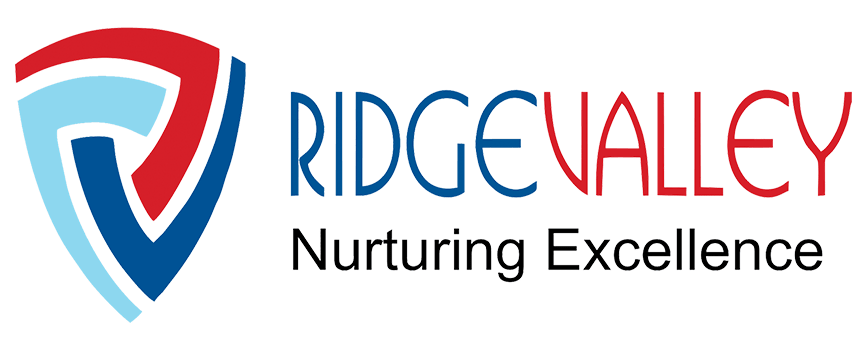Introduction:
In today’s interconnected world, education is no longer limited to local classrooms. The boundaries between nations, cultures, and economies are becoming increasingly fluid, and preparing students for this reality requires a forward-looking approach. At Ridge Valley, the Best School in Gurgaon where schools that provide global exposure through international programs are giving children an edge, equipping them with the skills, values, and perspectives needed to thrive in a rapidly changing global landscape.
For parents who aspire to see their children ready for international opportunities, the school represents more than just strong academics—it is a gateway to global learning, cultural diversity, and cross-border collaboration.
This article explores the importance of international programs, their impact on students, and why they have become a defining feature of leading schools in India’s most dynamic education hubs.
About Us:
Ridge Valley School opens windows to the world. We believe global exposure is not just optional—it’s essential. Through international exchange programs, global collaborations, and virtual classrooms, students are exposed to diverse perspectives and real-world contexts. Our curriculum includes globally benchmarked modules, Model United Nations, cross-border competitions, and guest lectures by international experts. On campus, events like Culture Fests, Global Languages Week, international arts festivals, and Community for Change programs bring the world into classrooms. With state-of-the-art robotics and innovation labs, thinking spaces designed for global projects, and mentors guiding each student, we build learners who are not just academically strong but culturally fluent and globally aware. Our extracurriculars—dance, music, art, sports—often intersect with themes from around the world, preparing students to thrive globally.
Why Global Exposure Matters in Modern Education
1. Expanding Worldviews
Traditional education often focuses on national contexts, but global exposure allows students to see beyond geographical boundaries. They develop an understanding of different cultures, lifestyles, and ideas, making them empathetic and adaptable global citizens.
2. Preparing for International Careers
The job market is no longer confined to local industries. Employers seek candidates who can adapt to cross-cultural workplaces, communicate effectively, and think globally. Early exposure to international programs builds these competencies in young learners.
3. Enhancing Academic Rigor
International programs often introduce students to globally benchmarked curricula, exchange opportunities, and advanced teaching methodologies. This elevates learning beyond textbooks and helps students compete on international platforms.
4. Building Confidence and Independence
Stepping into international classrooms or exchange programs pushes students out of their comfort zones. They learn resilience, independence, and the ability to adjust to new environments—qualities essential for success in higher education and beyond.
Forms of International Programs in Schools
Global exposure is not a one-size-fits-all concept. The school adopts a multi-layered approach to international learning through diverse programs.
1. Student Exchange Programs
One of the most enriching forms of global exposure, exchange programs allow students to spend a term or semester in a partner school abroad. Living and studying in a new culture helps them:
-
Adapt to diverse learning environments.
-
Experience cultural immersion.
-
Gain language proficiency.
2. International Collaborations and Partnerships
Partnerships with schools in other countries foster cross-border projects. Students collaborate virtually on shared assignments, debates, or research projects, promoting global teamwork and digital communication.
3. Global Curriculum Integration
Adopting international frameworks such as Cambridge IGCSE, IB, or hybrid curricula ensures that students are exposed to teaching styles and assessment standards recognized worldwide. This makes transitions to universities abroad smoother.
4. Virtual Global Classrooms
Advancements in technology have allowed schools to bring global exposure into classrooms without physical travel. Virtual guest lectures, collaborative online projects, and international competitions give students access to worldwide learning.
5. Cultural Immersion Trips
Educational tours, cultural exchange visits, and participation in global conferences or Model United Nations (MUNs) provide real-world global experiences that enhance intercultural awareness.
Benefits of Global Exposure for Students
Academic Advantages
-
Access to diverse knowledge systems.
-
Understanding multiple perspectives in problem-solving.
-
Enhanced critical thinking through global discussions.
Cultural Awareness
-
Respect for different traditions and customs.
-
Tolerance and inclusivity in peer relationships.
-
Broader outlook on global issues like climate change, sustainability, and human rights.
Personal Development
-
Improved communication and interpersonal skills.
-
Boosted confidence from navigating diverse environments.
-
Independent decision-making and leadership qualities.
Career Preparedness
-
Familiarity with global industry standards.
-
Networking opportunities with international peers and mentors.
-
Competitive edge in university admissions and future employment.
How International Programs Align with Holistic Education
Education today extends far beyond exams. International exposure supports a holistic model that develops intellect, creativity, emotional intelligence, and social responsibility.
-
Leadership: Students participating in cross-border programs often take leadership roles in collaborative projects.
-
Creativity: Exposure to diverse cultures sparks innovation in art, science, and problem-solving.
-
Global Citizenship: Children learn that they are part of a larger, interconnected world and carry responsibilities toward global sustainability.
This aligns perfectly with the vision of the school, where learning outcomes are measured not just by grades but by the readiness to thrive globally.
The Role of Teachers in International Programs
Teachers play a crucial role in bridging local learning with international opportunities. Progressive schools invest in:
-
Global Teacher Training: Educators undergo training to adapt international best practices into local classrooms.
-
Collaborative Teaching Models: Teachers engage in joint projects with international counterparts, enhancing the diversity of content delivery.
-
Mentorship for Global Competitions: From debate forums to STEM contests, educators guide students to excel on international platforms.
By supporting international programs, teachers ensure that students receive both academic excellence and cultural competency.
Real-World Examples of Global Learning Opportunities
1. Model United Nations (MUN) Conferences
Students simulate UN proceedings, engaging in diplomacy, negotiation, and policy-making. Participation hones leadership, critical thinking, and global awareness.
2. International Olympiads and Competitions
Exposure to mathematics, science, and language contests on a global scale challenges students to achieve academic excellence.
3. Cross-Cultural Art & Music Programs
Art, theatre, and music collaborations with international schools nurture creativity and appreciation for global artistic diversity.
4. STEM Collaborations
Working with international schools on robotics, AI, or sustainability projects allows students to apply theoretical knowledge in global contexts.
Challenges of Implementing International Programs
While international programs add tremendous value, schools often face certain challenges:
-
High Costs: Exchange programs and trips can be expensive, though scholarships and virtual collaborations help reduce barriers.
-
Cultural Adjustment: Some students may initially struggle with cultural differences.
-
Balancing Local and Global Education: Ensuring that students remain rooted in their culture while exploring global perspectives is crucial.
Leading institutions address these challenges through financial aid, orientation programs, and well-balanced curricula.
Parents’ Perspective: Why Global Exposure Matters
Parents today understand that academic performance alone does not guarantee success. They prefer schools that blend rigorous learning with opportunities for international engagement. Feedback from families often highlights that:
-
Children return from global programs more confident and independent.
-
Exposure helps in early career planning and university admissions abroad.
-
International experiences foster resilience, maturity, and adaptability.
This explains why many parents look for the schools—an institution that ensures their children graduate with global perspectives and practical skills.
Future of Global Education in India
The demand for international exposure in education will only grow in the coming decade. Some trends shaping the future include:
-
AI-Powered Global Learning Platforms: Students collaborating with peers across continents in real time.
-
Sustainability-Focused Global Projects: Preparing the next generation to address worldwide environmental challenges.
-
Greater University Collaborations: Schools partnering with global universities for pre-college programs and early mentorship.
-
Diversity and Inclusion Initiatives: Encouraging cultural sensitivity and equity across global classrooms.
Schools are already setting benchmarks in these areas, ensuring their students are not just academically capable but also culturally competent and globally connected.
Conclusion:
Global exposure is no longer an optional add-on—it is a necessity for preparing students for the future. At Ridge Valley, the Best School in Gurgaon where international programs expand worldviews, enhance learning, and equip children with the adaptability and confidence needed in a globalized economy.
For families seeking the schools, the defining factor lies not only in academics but also in how the institution integrates international opportunities into everyday learning. With cross-border collaborations, cultural exchanges, and future-ready teaching, these schools are shaping global citizens who are ready to excel anywhere in the world.
Education that connects classrooms to the world ensures that every student has the chance to dream without borders, learn without limits, and succeed on a global stage.
FAQs:
Q1. Why is global exposure important in school education?
A1. It helps students develop cultural awareness, communication skills, and a broader perspective, essential for success in today’s interconnected world.
Q2. What international opportunities are available for students?
A2. Exchange programs, Model United Nations, global cultural fests, online collaborations, and foreign language workshops.
Q3. How do international programs improve academic learning?
A3. They allow students to apply classroom concepts in real-world contexts, boosting critical thinking and confidence.
Q4. Do international programs help in future career growth?
A4. Yes, students with global exposure are better prepared for higher studies abroad and have an edge in competitive careers.
Q5. Are these programs accessible to all students?
A5. Schools ensure inclusivity by offering both physical exchanges and virtual collaborations for wider participation.
Q6. How do parents contribute to global exposure programs?
A6. Parents often support cultural events, volunteer in exchange initiatives, and encourage their children to embrace new experiences










